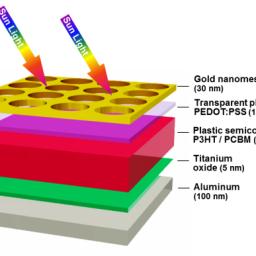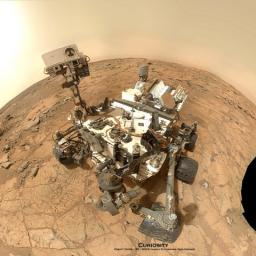Anyone who doesn't have a pickup needs a friend with one. The design's utility is timeless, as is our occasional need to haul cargo. We're still waiting for an electric pickup, but in the meantime here's Sparky, a converted Nissan Leaf. Engineers Roland Schellenberg and Arnold Moulinet, eager to do a little team-building and create a cool way of moving stuff around Nissan's 3,050-acre Stanfield, Arizona testing facility, led the project.
The front-half is original, but the bed comes from a Nissan Frontier pickup truck. The rear section of the cabin came from a junk Nissan Titan, complete with a power rear window.
http://www.wired.com/2014/09/nissan-builds-funky-electric-pickup-cant/Another option is the ultra-lightweight 275 lb (125 kg) GO-Easy trailer that the smallest cars, or even a motorcycle can easily tow. It also converts into a tent trailer for camping.
http://www.gizmag.com/go-easy-ultralight-trailer-camper/33328/
With a budget of just $1,200, and room for one carry-on and two check-in suitcases, both of no more than 60 kg (132 lbs), total, how would you prepare for living completely off-the-grid for two years in a remote village in the Himalayas?
That's the question asked by the Shortwave Listening Post, based on a user request, obviously with an intended focus on radio equipment and accessories. The necessities like food, shelter and warm clothing apparently being taken care of for you. Radio certainly would seem like the way to go for inexpensive entertainment and information in very remote areas, but answers that instead include satellite internet services (that stay within the budget with 2-years of service) could be equally interesting, if they are in fact available and practical.
http://swling.com/blog/2014/09/virtual-radio-challenge-ii-two-years-off-grid-in-the-himalayas/The US is about to finally embrace the secure chip-based authentication system called EMV-the standard was pioneered by Europay, MasterCard, and Visa-that the rest of the world has already adopted. Pushed by mounting fraud costs, credit card companies have crafted incentives for merchants to switch to the sophisticated readers needed to accept the cards. "There was a lot of skepticism about whether it would ever happen in the US," says Michael Misasi, an analyst with the Mercator Advisory Group. "All of the data breaches that have happened have woken people up, and progress has been accelerating this year." The first serious milestone is October 2015. By 2020 the swipe-and-sign magstripe reader will be as hard to find as the credit card impression rollers they supplanted.
The end is nigh for online credit card fraud, too. Systems like Apple Pay and
Visa's newly announced Visa Token Service (something Discover, Bank of America, Citibank and American Express offered several years earlier) accomplish the same security goals as EMV, but also work online. They replace the static credit card number with a temporary token that changes every time.
http://www.wired.com/2014/09/emv/
Considering how ubiquitous LEDs are becoming in our gadgets, phones, and even ambient lighting, it's good to look for efficiencies and process improvements in their manufacture. Princeton University researchers have developed a new method to increase the brightness, efficiency and clarity of LEDs, which may lead to big changes in this technology.
Although they are known for their efficiency, only about 38 percent of light generated inside an LED actually escapes, due to hitting the envelope of the LED at an angle of incidence greater than the critical angle. The trapped light (called total internal reflections) also heats the LED, which greatly reduces its lifespan.
The solution presented by Chou's team at Princeton University is the invention of a nanotechnology structure called PlaCSH (plasmonic cavity with subwavelength hole-array). The researchers reported that PlaCSH increased the efficiency of light extraction to 60 percent. Chou and his team are now conducting experiments to demonstrate PLaCSH in red and blue organic LEDs, in addition the green LEDs used in the current experiments.
This reported breakthrough appears
strikingly similar to one from the University of Glasgow in 2007, similarly reporting the use of cost-effective nanotechnology processes to greatly improve efficiency of LEDs.
PlaCSH technology was first announced two years ago,
reported to offer a 175 percent efficiency improvement to photo-voltaic solar cells, additionally reducing the thickness of the silicon used in traditional solar panels by a thousand-fold, while also being cost-effective to manufacture.

At 70 percent complete, and slated to be open and operating November of 2015,
the Carlsbad Desalination Project is predicted to be, at 50-million gallons per day, the largest and most energy-efficient seawater desalination plant in the Western Hemisphere. And it will supply enough water to meet about 7 percent of San Diego county's water needs.
The water authority has pledged to buy the desalinated water at $2,014 to $2,257 per acre-foot. About twice the cost of traditional water supplies, but about half that of desalination plants just 10 years ago. An acre-foot is enough to supply two homes for a year. During the first full year of production - in 2016 - the desalinated water will add about $5.14 per month to the typical household's water bill, according to the water authority.
"This source, since it's not dependent on rainfall and snow melt, is the (region's) first drought-proof source of water."
But they're not going all-in with desalination. San Diego city's plan to purify wastewater to drinking-water standards is the next major item on their agenda. The city envisions constructing a water-purification plant that can generate 83 million gallons of drinking water per day by 2035. The purification plant could also help eliminate the need for $1.8 billion in overdue upgrades to the Point Loma Wastewater Treatment Plant by reducing the amount of wastewater that must be piped to sea.

In the past decade, probes orbiting Mars and telescopes on Earth have detected what appeared to be plumes of methane gas from the Red Planet. The presence of colorless, odorless, flammable methane on Mars, the simplest organic molecule, helped revive the possibility of life once existing, or even currently living, just below the planet's surface. Scientists have suspected that methane stays stable in the Martian atmosphere for only about 300 years, so whatever is generating this gas did so recently.
A large-scale non-biological source of methane production on Mars might have been an even more exciting result. A renewable process humans might be able to adapt for use on Earth to meet our energy needs. But Curiosity has revealed no trace of methane on the Martian surface.
"Based on earlier observations, we were expecting to land on Mars and measure background levels of methane of at least several parts per billion, but saw nothing," Webster told Space.com.
"It's a mystery surrounded by an enigma here," said imaging physicist Jan-Peter Muller.
http://www.nbcnews.com/science/space/mars-mystery-deepens-curiosity-finds-no-sign-methane-f4B11202946This week, CERN scientists published an analysis of data from the Alpha Magnetic Spectrometer (AMS), which has been riding aboard the International Space Station since 2011, which detects subatomic particles constantly bombarding Earth. They include positrons, also known as anti-electrons, exceedingly rare antimatter particles that can result from the breakdown of dark matter.
"AMS now unveiled data that no other experiment could ever record," said CERN spokesman Arnaud Marsollier.
http://www.channel3000.com/technology/emerging-clues-may-point-to-dark-matter/28166232Scientists have identified lead poisoning - transmitted through cookware made of recycled metal - as an important factor in the health of Africans. And lead poisoning has important impacts on health, learning, and cognition.
Despite the ban on lead in gasoline, blood lead levels in African nations have remained stubbornly high. Now, researchers from Ashland University think they might know why. According to their tests, cookware made in Africa from recycled metals is leaching lead into food in quantities nearly 200 times the levels permissible in the United States.
"This previously unrecognized lead exposure source has the potential to be of much greater public health significance than lead paint or other well-known sources that are common around the world," added co-author Perry Gottesfeld. Lead exposure in children has been linked to brain damage, impaired cognition, lower educational performance, and a range of other health effects. It has also been suggested that the worldwide drop in violent crime was linked to the banning of leaded gasoline.
The seemingly on-again, off-again negotiations between IBM and GlobalFoundries over IBM's microchip manufacturing operations may have reached a successful conclusion this week. Dan Nenni, a semiconductor industry writer and consultant, published a story on Tuesday on the SemiWiki website asserting that
IBM and GlobalFoundries have reached a "handshake" agreement on a deal valued at more than $2 billion, "on pretty good authority."
The potential deal is part of the transformation of the computer chip industry toward a "fabless" model under which chip companies outsource their manufacturing to so-called "foundry" companies such as GlobalFoundries and Taiwan Semiconductor Manufacturing Co. The trend has even led companies like Intel Corp. and Samsung Electronics, which still make their own chips, to offer foundry services.
IBM sent shock waves through the industry when it was reported they were investigating a sale of their chip fabrication business earlier this year. IBM has been a stalwart of the world semiconductor industry, inventing DRAM, mastering SiGe, SOI and much more besides and supplies manufacturing process technology to half the world's major companies, including Samsung, Globalfoundries, UMC, STMicroelectronics, Renesas, NEC, Freescale, Toshiba and Infineon.
Electronics Weekly has a good look at the deal, the history, and the implications for the industry.The modern era of solar electricity got under way in 1954 as Bell Laboratory scientists unveiled a "solar battery" made from silicon that was used to power a toy Ferris wheel and a radio. In recent years, solar has boomed as costs have declined and government policies have favored a renewable energy source that can help combat climate change.
California's solar energy generation hit a record earlier this year, accounting for 6 percent of energy from the California Independent System Operator, which manages the bulk of the state's flow of electricity. Last year's growth in solar capacity was greater than all earlier years combined. The state backs solar through financial incentives and a law that requires utilities derive 33 percent of their energy from renewable energy sources by 2020.
Good news for responsible energy generation.



